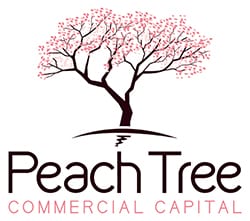As a small business owner, you know that one of your biggest challenges is ensuring that you have access to capital when you need it. However, all too often, entrepreneurs don’t realize how many financing options are available. Unfortunately, not understanding the pros and cons of different methods could mean that you wind up paying more in the long run.
So, with that in mind, we want to focus on one option in particular: a business line of credit. In this article, we’ll discuss the basics of how this kind of credit works, when you should use it, and how it compares to other avenues of financing.
What is a Business Line of Credit?
When you first started your company, chances are that one or more banks offered you credit cards. While cards are a decent way to cover some expenses, they come with a variety of fees. Part of the reason why banks and lenders provide credit cards is that they offer better returns for them, not for you.
A business line of credit operates similarly to a credit card, but it’s much more flexible and much easier to manage in the long term. Let’s break down a few of the critical differences between a line of credit and a card.
Cash Withdrawals – with a card, you have to charge directly to your account. With a line of credit, however, you’re able to borrow as a cash payment that you can use however you see fit. This kind of financing offers much more flexibility when paying for items or repaying vendors.
Rates and Fees – as with a card, you pay back on the line of credit based on how much you borrow. However, there are fewer fees you have to worry about, which means you could save a lot of money overall.
Credit Limits – typically speaking, a business credit card doesn’t require much in the way of history or a credit rating. A line of credit, however, usually requires at least six months of revenue to obtain. Lenders will look at your company history to determine the maximum amount, which can range from $1,000 to $250,000 for small businesses.
Collateral – business credit cards never need collateral, such as equipment or real estate. For newer companies, though, collateral may be necessary for a line of credit, depending on how high you want the limit to be.
Overall, as an entrepreneur, you will likely need both a card and a line of credit. However, we highly recommend borrowing against the line whenever possible, as you will save money and get more flexibility.
Another thing to keep in mind is that you don’t have to set up a strict payment plan when repaying a line of credit. Unlike a loan, there are simply minimum payments to make each month, and there is no deadline for when the balance has to reach zero.
Comparing Lines of Credit to Other Financing Options
For many small businesses with a little bit of operating history, a line of credit seems like a valuable option. While it can help you manage your cash flow and expenses, it’s far from the only tactic you can use. Here is a brief breakdown of other loan options that can work for your company.
Bridge Loan
These loans typically have a short repayment schedule (i.e., a year), and can help cover significant expenses, such as paying off a new property. However, a bridge loan comes with higher interest rates, so we only recommend them if you have money that just hasn’t come in yet. For example, a real estate investor using the loan to buy a new property before the old one sells.
Equipment Loan
When you have to buy expensive equipment, this kind of loan is usually ideal. There are two benefits to an equipment loan. First, the interest rates are generally lower because you don’t have to borrow as much. Second, the equipment itself is the collateral, so you don’t have to provide anything for the loan.
Construction Loan
If you are building a new property, construction loans can be a quick way to ensure that you complete development. As with bridge loans, they are temporary, although you can convert them to a long-term mortgage in some cases.
Real Estate Financing
As you can imagine, this financing is only designed for buying property. Typically, you need to find investors who will get a cut of the profits once the deal is completed. Depending on the project, you might need multiple investors with varying payout rates.
SBA Loan
The Small Business Administration can provide loans for qualifying companies. The SBA is not a lender, but it will cover your loan, which can help you get better financing and lower interest rates. Typically, these loans offer broad funding, or you can tie it to something specific, like an equipment purchase or real estate.
Factoring
If you run a business with outstanding accounts receivable, then factoring may be a good option. The way it works is that you essentially “sell” your AR invoices to a factoring company, which pays you a portion immediately. Once they receive the money from your clients, you get the remainder of the invoice (minus factoring fees). This process works well if you have large invoices, mainly because it’s your clients who need to pay, not you.
Asset-Based Financing
Finally, if you have assets for your business, you can leverage them to get money when you need it. Loan amounts vary based on the value of your assets and how much equity they have.
Contact Us Today
With so many financing options available, it can all seem a bit overwhelming. Business lines of credit, however, are easy to manage and are an excellent addition to your cash flow system. Contact us to find out more, and let us help you lock down the financing your business needs to get ahead.

